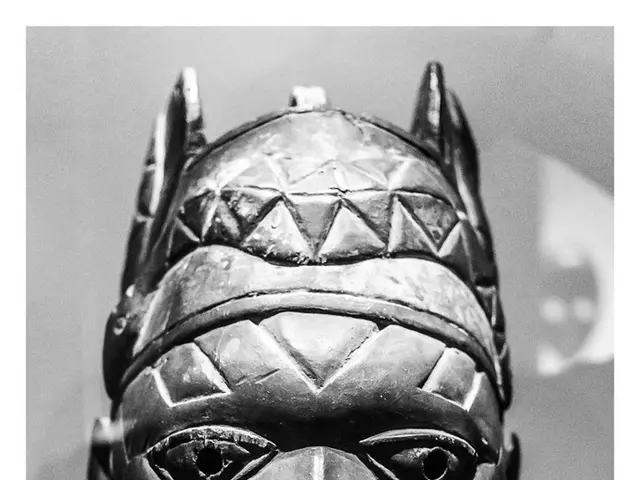Differentiating Age Spots from Skin Cancer: Recognition Guide
Age spots, often called solar lentigines or liver spots, are harmless patches that appear on skin as it ages, while skin cancer is a type of cancer that can be harmful and potentially life-threatening. Both conditions may resemble one another, but they have distinct differences in appearance, symptoms, and behavior.
Age Spots
Age spots are usually flat, brown, or tan patches that show up on skin exposed to the sun, such as the face, hands, and chest. They tend to remain stable over time. Age spots are generally harmless and asymptomatic, although they may darken over time. They are uniform in color and shape.
Skin Cancer
Skin cancer may present itself in numerous ways, depending on the type. For instance, basal cell carcinoma (BCC) could appear as small pearly bumps that are red, pink, or have blue, black, or brown areas. A squamous cell carcinoma (SCC) might manifest as red or darkened patches with scaly skin, or a raised lump resembling a wart that can bleed and crust over. Melanoma often follows the ABCDE rule: Asymmetrical, irregular border, color variation, diameter increase, and evolution.
Symptoms
Age spots are generally harmless and asymptomatic. Skin cancer, however, may cause itching, bleeding, crusting, or ulceration. Lesions can feel tender or sore.
Diagnosis
Age spots are typically diagnosed by visual inspection; however, a biopsy may be necessary if there is suspicion of melanoma. Skin cancer requires a closer examination using a dermascope, and a biopsy is often necessary for a definitive diagnosis. Regular monitoring and the ABCDE rule are crucial for melanoma detection.
Treatment
Although age spots are harmless, treatments such as chemical peels, laser therapy, or topical creams can help lighten their appearance for cosmetic reasons. Skin cancer requires immediate medical attention. Treatments may include surgical excision, topical creams, radiation therapy, or more aggressive treatments like chemotherapy for advanced cases.
In conclusion, while age spots are benign and stable, skin cancer requires prompt medical intervention. The similarities in appearance between these conditions sometimes necessitate regular skin checks for early detection of skin cancer.
- In the field of oncology, skin cancer, including melanoma and otherskin cancer, can potentially be life-threatening and requires a closer examination and often a biopsy for a definitive diagnosis.
- For seniors, a key aspect of health-and-wellness and medical-conditions management includes regular monitoring and checks for skin cancer, as its symptoms such as itching, bleeding, crusting, or ulceration may indicate its presence.
- In the realm of science, the study of dermatology involves understanding and treating a range of skin conditions, including both age spots and skin cancer, to ensure proper skin care and prevent any deterioration in skin health.
- Skin-care routines for seniors should also focus on prevention, such as wearing protective clothing, applying sunscreen, and staying aware of any changing mole or skin condition to catch skin cancer signs early.
- In some instances, treatment for skin cancer might involve surgical excision, topical creams, radiation therapy, or more aggressive treatments like chemotherapy, exemplifying the importance of regular skin checks and early detection for improved health outcomes.







